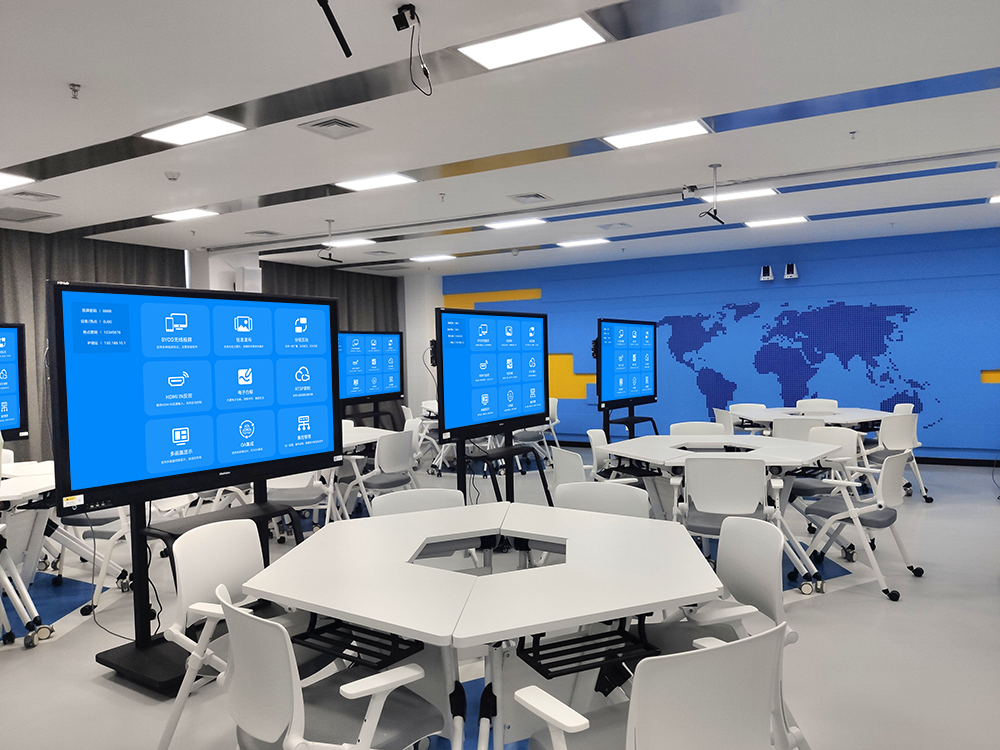Smart Classrooms: Making Teaching More Efficient
This smart classroom solution integrates devices with the teaching environment, allowing lessons to move beyond the podium. It helps teachers teach more smoothly and students become more engaged in learning.
Hassle-Free Device Linkage
A teacher’s phone and tablet can connect directly to the classroom’s large screen. They can scan a QR code to instantly mirror courseware and then walk around the classroom, using their fingers to turn pages and highlight key points without having to stay at the podium. Students’ tablets can also connect to the large screen, allowing them to mirror their homework and class notes at any time to easily share their ideas.
Innovative Classroom Interaction
During class, a teacher can ask a quick question, and students can answer instantly on their devices. The answers are compiled on the large screen in real time, so it’s clear at a glance who got it right or wrong without having to ask each student individually. During group discussions, each group’s ideas can be displayed on the main screen in a split-screen view. Everyone can discuss around the screen and even annotate each other’s work, making for a more dynamic exchange of ideas.
Even in a lab class, the lesson can become more intuitive. A visualizer can be used to project the experimental steps onto the large screen so students can follow along. If a student has a question, they can mirror their own work, and the teacher can point to the screen to provide on-the-spot guidance. This makes details clear and helps resolve questions quickly.
Simple Post-Class Wrap-Up
Classroom courseware, annotations, and student answers are automatically saved to a class resource library. Students can scan a QR code after class to review the content, so they don’t have to worry about missing anything. Teachers can view backend data on student interaction to see which areas students are struggling with and adjust their teaching focus more precisely.
The devices can be used simply by connecting to the network, and an administrator can check the device status remotely without having to visit the classroom for maintenance. This approach to smart teaching is both hassle-free and efficient.